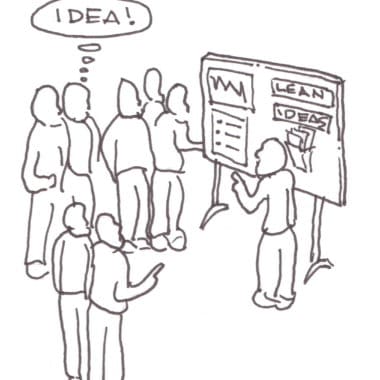The application of Lean within many industries has come a long way since Taiichi Ohno first studied Henry Ford’s use of continuous flow in the final assembly of the 1913 Model-T and his fascination with American supermarkets. Throughout his studies, he was able to pull the thoughts of process improvement gurus to eventually create what is known today as the Toyota Production System and the principles of Lean. With the increasing popularity of Lean, it’s important to understand that Lean is not just a theory that you study and just simply apply; it requires practice and more practice. The base of a continuous improvement mindset is “practice over theory”, and those organizations who have taken this to heart have seen better and more sustainable results when using the Lean methodology.
Learning the tools of Lean are easy and practical in many ways. The core idea of Lean is to still maximize customer value while minimizing waste as it was during the early days at Toyota, and the myths that Lean only applies to manufacture have faded over time. Although many organizations have made efforts to install Lean improvements, many organizations fail with their implementation of Lean process improvement programs is due to a lack of understanding of the purpose of the organizational changes and support provided by management.
Often organizations implement Lean theories into their process improvement programs without building a culture of continuous improvement amongst their employees first, which can undermine the goal of becoming a Lean organization.
In my experience as a Business Process Improvement Consultant, the five main reasons why Lean implementation fails are:
1) No Process Improvement Strategy
- First and foremost, implementing Lean is a long term strategy that requires commitment from the whole organization. The strategy is People rather than Process Dependent, therefore creating a clear vision will help an organization create a culture of continuous improvement and is critical to achieving a Lean philosophy. Assigning clear responsibilities and committing 100% will allow the organization to achieve the direction desired. Understanding the key performance indicators and setting timelines for when to start must be defined so the organization has a baseline for improvement.
2) Lack of Top Management Support
- Organizations must create Lean experts and change practitioners to meet Lean process improvement goals. Without the full backing of top management, any amount of Lean efforts can’t be fully realized. Lean requires organization leaders to be inspiring and relentless in their pursuit of continuous improvement within the organization. Lean is not a project – without adequate leadership improvements will not survive in the long term. Lean involves a change in the mindset for achieving continuous improvement and senior management must be at the head of developing this attitude and culture among employees.
3) Lack of Involvement
- Employee participation is vital to achieving long term Lean goals. Implementing Lean is a culture and people change. Managers need to talk to their staff; Employees typically have more in-depth knowledge and visibility on their work. The greater the line of communication the greater chance employees will support process improvement initiatives. Expecting success without gaining proper insight and mutually engaging employees is a recipe for failure.
4) Not Educating Employees
- Management needs to effectively communicate the changes to their employees and provide proper training. When we don’t understand something it is next to impossible to support it. Lean training is crucial to senior management, as well as to employees doing the work. People will stand behind initiatives they understand and if proper training is received employees will develop a continuous improvement mindset to achieve a Lean strategy.
5) Conflicting Metrics
- To understand where you want to be, you have to understand where you are. Having the right performance metrics can set the baseline to install a Lean philosophy and a continuous improvement mindset. The challenge is to apply the right metrics to tell the story of how your strategy is performing and when to make changes.
If you want Lean to succeed in your organization, management and employees must become practitioners of Lean. Once someone is taught how to see the waste in a process, people within your organization will see it everywhere and be motivated to improve processes. Success lies in the hands of organizations people and culture, and the greatest challenge is to apply leadership, priorities, and resources to achieve the strategic goals of becoming a Lean organization driven by a continuous improvement mindset.
If you are interested in starting your organizational Lean Journey contact us below.








